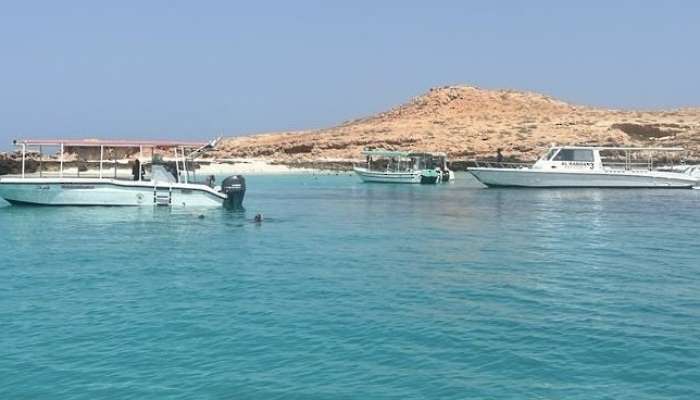The Daymaniyat Islands Nature Reserve has seen an influx of visitors, with more than 55,000 people exploring the stunning archipelago since the beginning of this year until the end of August. Located off the coast of the Wilayats of Seeb in the Governorate of Muscat and Barka in the Governorate of South Al Batinah, this reserve is renowned for its natural beauty and unique limestone rocks and ancient coral reefs. The reserve comprises nine main islands, including Al Dimaniya, Hayut, Qafsiya, Al Jabal Al Kabir, Al Ghorfa, Al Lomiya, Qasma, Awlad Lajoun, and Lajoun, with a total area of 203 square kilometers encompassing both land and marine areas.
Eng Salem bin Saeed al Maskari, Director of the South Batinah Environment Department, highlighted the measures taken to protect the wildlife and ecosystem of the islands. The Environment Authority has designated certain islands, like Al Jabal Al Kabir and Lajoun, for overnight stays and camping from November to April to ensure the protection of migratory birds nesting on the beaches and flats. From May to October, landing on these islands is restricted to safeguard the vulnerable bird populations. Additionally, an underwater museum was inaugurated near the reserve in May, aiming to rehabilitate coral reefs and create a new ecosystem while reducing the pressure on natural reef sites in the Daymaniyat Islands Nature Reserve, thereby supporting eco-tourism.
Hamoud bin Khamis Al-Nairy, an environmental specialist overseeing the reserve, emphasized the importance of regulations and permits for visitors to access the reserve. The issuance of electronic permits via the Environment Authority’s portal ensures the protection and conservation of the reserve through a dedicated supervisory team. The Daymaniyat Islands provide a safe haven for various species, including sea turtles such as the sharf and green turtles, as well as marine mammals like whales, dolphins, and whale sharks. The islands are home to a diverse array of plants and marine life, attracting migratory birds like ospreys and peregrine falcons during breeding seasons.
The unique ecosystem of the Daymaniyat Islands Nature Reserve offers a glimpse into Oman’s rich biodiversity and natural heritage. The abundance of wildlife species, both on land and in the marine environment, creates a thriving ecosystem that supports a wide range of animals, plants, and marine organisms. The reserve serves as an important breeding ground for sea turtles, with the calm atmosphere providing an ideal nesting site for these endangered species. In addition to turtles, the islands attract a variety of marine mammals and fish, making it a hotspot for wildlife enthusiasts and nature lovers looking to explore Oman’s pristine coastal regions.
The efforts to protect and preserve the Daymaniyat Islands Nature Reserve underscore the commitment to conservation and sustainable tourism practices in Oman. By implementing strict regulations and monitoring mechanisms, authorities ensure that the delicate balance of the ecosystem is maintained, allowing visitors to enjoy the natural beauty of the islands while safeguarding the resident wildlife populations. The establishment of the underwater museum as a novel approach to coral reef conservation demonstrates a forward-thinking approach to eco-tourism, providing a unique experience for divers and tourists while minimizing the impact on the fragile marine environment.
In conclusion, the Daymaniyat Islands Nature Reserve stands as a beacon of biodiversity and conservation in Oman, attracting thousands of visitors each year to experience its stunning landscapes and rich marine life. Through careful management and sustainable practices, the reserve continues to thrive as a sanctuary for wildlife, offering a glimpse into the natural wonders of the Sultanate. As efforts to protect the environment and promote eco-tourism in Oman grow, the Daymaniyat Islands serve as a prime example of how responsible tourism can support conservation initiatives and preserve the country’s natural heritage for future generations to enjoy.











